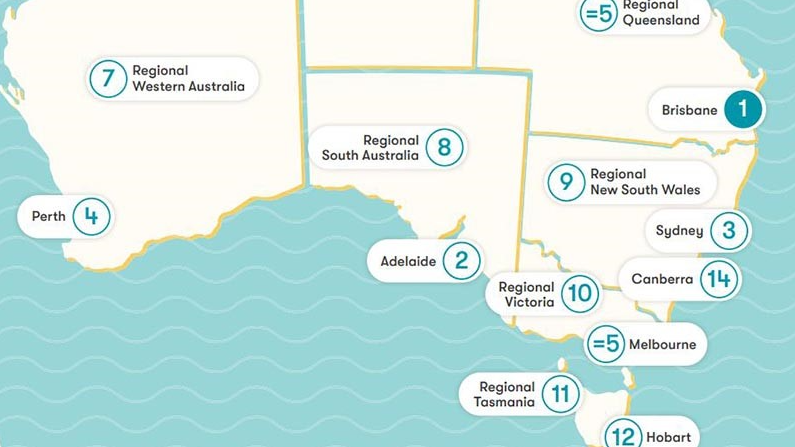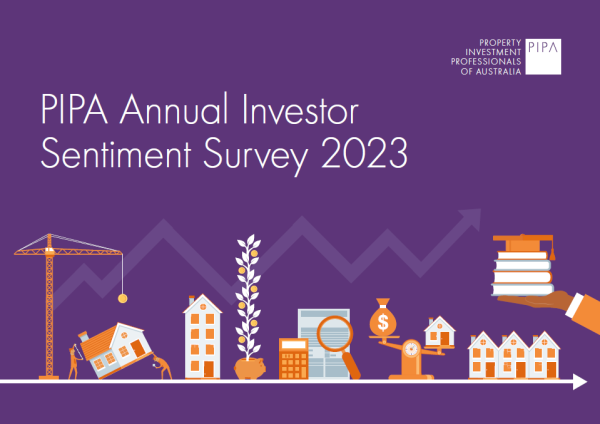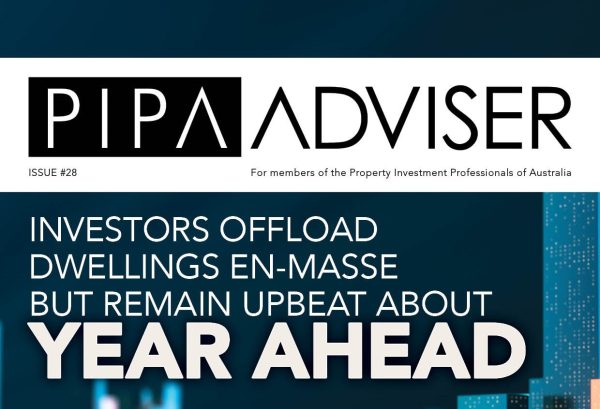Property market update: Brisbane, January 2021
Feb 2021Karen Millers
Categories
Location ReportsMedia releasesNational market updatesPersonal advisersPIPA AdviserPIPA Annual Investor Sentiment SurveysPIPA Member ProfilesPIPA video updatesPIPA webinarsPodcastsProperty advisersProperty newsLatest Articles
‘More chance of winning lotto’ than housing targets being met
PIPA Member Profile | Amanda Turner, Opulence Property
According to data, Queensland appears to have outstripped the other states in 2020.
The Sunshine State recorded solid demand for detached houses, with buyer attraction towards lifestyle areas seen to deliver 6-10 per cent capital growth in 2021 across South-East Queensland.
Brisbane too saw solid growth on the back of interstate migration, a broad range of stimulus measures and positive changes in market sentiment, with local and interstate investors driving the property price lift.
At the end of 2020, Corelogic reported a 4.14 per cent increase in its Brisbane home value index over the last year, with houses climbing 4.66 per cent and units rising 2.33 per cent year-on-year.
Apollo Auctions director Justin Nickerson said that all signs and indications point to Brisbane maintaining its strong finish in 2020 through to 2021.
However, property experts have cautioned that the city’s growth may not be as grand as expected, so can the Sunshine State capital maintain its momentum this 2021?
Property values
After the property market finished the previous year with solid foundations, housing values continued to climb through the first month of 2021.
Australia’s housing value rebound continued into 2021 with the CoreLogic national home value index rising by 0.9 per cent in January. The monthly increase takes national prices to a record high, exceeding the previous record hit in 2017.
Brisbane’s market recorded a 0.9 per cent monthly increase in January with the median value at $527,826. This brought the quarterly capital gain to 2.5 per cent, with growth of 4.0 per cent year-on-year.
Similar to the other cities, houses in Brisbane performed better than units over the month, rising 1.0 per cent, while units climbed a moderate 0.4 per cent.
At an annual rate, Brisbane house values rose 4.9 per cent.
Based on the median price growth, a house in Brisbane that was purchased in January 2020 for $750,000 would now be worth $786,750. However, the current median value for a house in Greater Brisbane is $583,902, the highest it has ever been.
Meanwhile, Brisbane’s unit prices currently sit at a median price of $393,177.
Dwelling prices are expected to continue rising as investor activity continues to strengthen across the nation, with Brisbane proclaimed to be more appealing than its capital city counterparts.
According to a recent Property Investment Professionals of Australia (PIPA) survey, an increase in the number of investors, combined with stronger activity from owner-occupiers and first home buyers, is expected to exert extra pressure on prices across the nation. A majority of the 1,100 investor participants said that as the nation recovers from the economic impact of COVID-19, they are more bullish about Brisbane than Sydney and Melbourne.
Consumers are also optimistic about Brisbane’s property values.
Figures from OpenAgent.com.au’s latest Consumer Sentiment Survey showed that Queensland sentiment is the highest it’s ever been, with almost 88 per cent of respondents believing that property prices will continue to rise in the following six months. Meanwhile, 10 per cent expect prices to remain flat, while 2 per cent believe prices will edge down.
Supply and demand
National residential property listings fell in January 2021 by 2.9 per cent, sliding from 272,999 in December 2020 to 265,116. All capital cities saw a decline in property listings over the month except for Perth. Compared with the same period in the prior year, listings were down by 10.5 per cent.
Brisbane’s listings fell at a monthly rate of 3.5 per cent to 25,720 in January 2021 from the 26,643 listings recorded in December 2020. Compared with 12 months ago, listings fell 12.0 per cent in the Queensland capital city.
According to SQM Research managing director Louis Christopher, January traditionally sees a drop in properties listed for sale as the market emerges from the “summer holiday mode”.
But he noted the increase in annual listings. “However, when we consider the number of new listings compared to January 2020, there was a material rise in nearly all cities. This finding is consistent with the observed early start to the auction market over January and February,” he said.
Demand for Brisbane properties are seen to ramp up this year, as Aussies ditch the cities for regional dwelling.
Provisional internal migration data from the Australian Bureau of Statistics showed that the nation’s capital cities had a net loss of 11,200 people during July, August and September last year, which was the largest on record. According to ABS, Brisbane gained the most people through net internal migration (3,200), while Sydney lost the most (7,800).
Propertyology’s head of research, Simon Pressley, explained that while the capital cities are being hampered by the COVID-19 pandemic, regional Australia has not suffered the same fate on the health front. On a bullish note, Mr Pressley concluded that the regions will continue to dominate the property game for years to come.
Auction rates
Auction activity continued to ramp up at the start of the year and capital city clearance rates are picking up as low borrowing costs are seen to stick around for another few years.
According to data from CoreLogic, auction volumes across the country increased from 884 in the week ended 31 January, which resulted in a clearance rate of 77.2 per cent, the highest final clearance rate recorded since February 2017.
During the last week of January, 50 homes went under the hammer last week, up sharply from a week earlier when 390 auctions were held.
“Such strong auction results signal further upwards pressure on housing prices amid extremely tight advertised supply levels and above average buyer demand,” CoreLogic noted.
Rental values
Throughout the pandemic, stalled overseas migration has caused an oversupply and weak demand for units. But there are early indications that the rate of decline is easing across the unit sector, which is good news for landlords who may have unoccupied properties for extended periods of time.
Brisbane, which was also declining, recently showed signs of stabilisation as rents begin to slowly edge up. The city posted an annual decline 0.3 per cent, with houses in positive territory rising at 3.2 per cent.
The January figures show a promising return to normal, at least where the market is concerned. The recovery has likely been spurred on by the increased government spending and rising consumer confidence.
Vacancy rates
Every capital city saw a fall in the vacancy rate from December to January. Nationally, vacancy rates slipped in January to 1.9 per cent, the lowest vacancy rate since March 2020, prior to the pandemic according to Domain.
In Brisbane, vacancy rates declined to 2.3 percent in January 2021 from December’s 1.9 percent. This brings the annual vacancy rate to 1.6 percent during the first month of the year.
Dr Nicola Powell, senior research analyst for Domain, commented that it is typical for the rental market to tighten in January following a seasonal boost of supply over December.
“All capital cities have tighter rental markets than at the same time last year, except Melbourne and Sydney. Melbourne’s vacancy rate is more than double last year’,s while Sydney’s remains steady annually, following a COVID-induced bounce during 2020.”
“Strong exposure to international border closures in Melbourne and Sydney will ensure significantly less demand for rentals for the foreseeable future, at least until international border restrictions are lifted,” she concluded.
Hotspots
For those looking for the next Queensland hotspots, Apollo Auctions director Justin Nickerson pointed to Brisbane’s outer inner-ring as the “sweet spot”.
According to him: “That has always been the sweet spot for Brisbane – suburbs that are three to five kilometres from the CBD – traditionally with good schooling and lifestyle options. These suburbs have grown steadily across the past four years.”
He also flagged that the remote-working environment may also translate to an influx of buyers in areas such as Wynnum, Manly, Sandgate or more coastal regions.
Zarah Mae Torraza, Smart Property Investment, 17 February 2021
https://www.smartpropertyinvestment.com.au/research/22298-property-market-update-a-brisbane-january-2021




